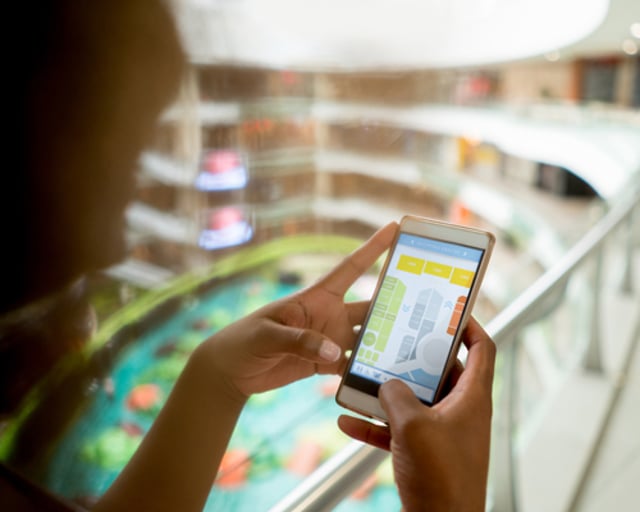How to Use Indoor Mapping for More Than Just Wayfinding
In 2017, Google Maps was the fifth most-used app in the United States, ahead of Instagram and Snapchat. When it comes to road navigation, gone are the days of paper maps and printed directions. Even usage of the once-essential GPS navigation devices is declining as people rely on Google and Apple Maps to guide them, turn by turn.
Just as consumer preference for maps has shifted to mobile for outdoor wayfinding, it’s only a matter of time before consumers see a paper hotel maps as a hindrance to finding their destination, rather than a help. But why would anyone use mapping technology for a small hotel with only a few floors? This article from Point Inside helps hoteliers understand what unexpected benefits could come from indoor mapping.
Take Choice Hotels, for instance. Nobody gets lost between the lobby and room 321 in a Comfort Suites or Quality Inn. A guest “getting lost” in a Quality Inn is not a pertinent issue, but there are more consumer uses for an indoor map than wayfinding alone. If a guest has already installed the Choice Hotels app, he or she already has a deeper relationship with the brand. A guest could see their room in the context of the property, and then maybe choose a more convenient parking spot. Maybe the guest has specific preference about room location and could choose a room before checking in that suits his or her preferences. For example, light sleepers often prefer a room far away the ice machine and the elevator or the pool.
In addition to hotel “business as usual,” a digital map could be a game changer in event of an emergency. Emergency exit instructions usually live on an unintuitive map posted to the back of the room door. If a hotel had previously deployed a digital map, guests could receive escape instructions sent directly to their phones, along with turn-by-turn directions to the nearest emergency exit.
The business case for integrating a digital map into a hotel app is twofold. Firstly, if designed correctly, the app would constantly capture feedback from guests searches. People naturally search when they see a map as the background, so deploying a map prompts guests searches. The items guests search for can reveal deeper insights about who they are as consumers. Did a guest search for the business center? The pool? Did she look at the exit plan? Did she review the options for ordering food nearby and call (from the number in the app) the local pizza joint for late night delivery? All of these searches are data points that should be captured and correlated to create digital marketing profiles to help Choice Hotels encourage like-minded individuals to download the app and attract more guests. For the hotel, an indoor map is simply a means to capture data that can augment digital marketing efforts and create hyper-contextualized content.
Secondly, in analyzing this data, hoteliers could discover that their guests prefer certain restaurants over others. Using this information, they can create an affiliate relationship with these restaurants that could result in small, incremental revenue. While this may not seem like a lot of money, this revenue alone could pay for the foundational mapping service. Additionally, as discussed above, the hotel might develop new audience profiles for digital marketing that results in one new guest per hotel per month. Again, a small number, but the lifetime value of that guest is meaningful. What if that one new guest becomes an app user? My guess is that the lifetime value of this guest is 10 times that of a non-app using guest. What if the guest is greeted by the front desk agent with "and we have a room near the stairs for you" or "we have an east facing room for you,” based on inferred preferences. The possible applications for increased guest value are nearly endless.
Integrating an indoor map into a hotel mobile app could have benefits for both the guest and the hotel’s business strategy at large. Thus, in this case, even small hotels can have their map and use it too.






